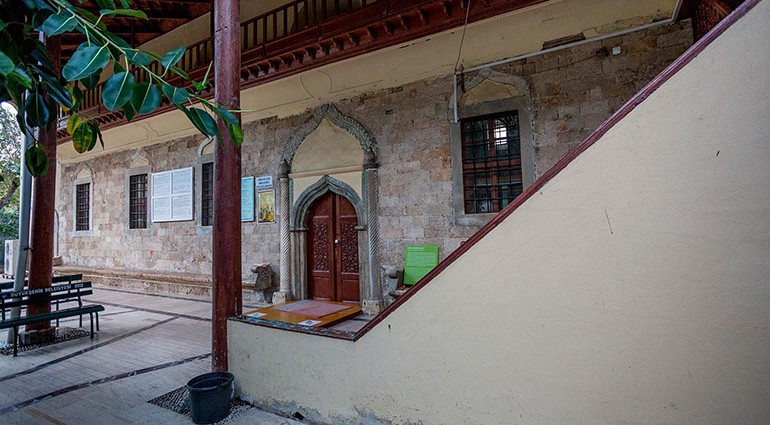Although the exact date is unknown, it is thought it was built early in the 19th century, the building prior to the population exchange of 1922, was known as the Panhagia Church and was one of the Greek Cypriots living in the city's largest religious structures, in Kaleici's south. After the population exchange, separated from its religious function, the building was employed for the storage of the collected historical artifacts, and it was later used as the Museum of Archaeology, being protected by being surrounded by high walls. This function remained until 1934. After this the museum was removed from here, to another area of Kaleiçi, to where the Yivli Minare complex stands, and the building began to be used as a mosque and then a minaret was added to the structure in 1958. During this process, a large part of the body of the bell tower which is located at the northern corner of the building was preserved. Like structures such as the nearby Truncated Minaret Mosque, at the time it was built as a church it was not fully aligned in an east-west direction. It is of rectangle plan extending in a southeast-northwest direction. It has a roof covered with a pitched roof tiled with curved terracotta tiles giving a corrugated appearance. The entrance to the building is through the doors located in the northern and southern faces, with the door in the northern facade providing the main entrance, more magnificent than the southern door. Twisted columns on either side of the door two pointed arches support upper band. Along this facade there is also a stone bench. Inside the building there are two rows of five columns that separate the hall into the three-aisled basilica type, shown by the gable roof visible on the exterior of the superstructure, supported by 4 columns in the inner center of the central isle covered by a dome and vaults. The change in the orientation from the East as it was constructed as a traditional church and was then converted into a mosque, is useful to realize; the altar was built in the apse.
